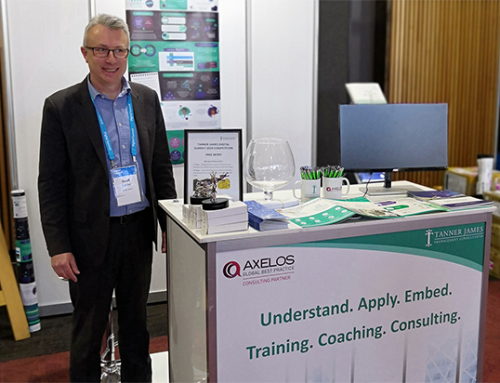Transformation is hard; often it is also necessary.
This is the mantra behind AgileSHIFT, the latest best practice solution from AXELOS. Today organisations need to continually improve in order to meet customer’s expectations and avoid being disrupted. AgileSHIFT looks to help organisations to change the way they operate to meet this challenge.
Like many of the AXELOS products, AgileSHIFT is built on a set of core principles that underpin the best practice and should be adhered to in order to effect change. To support the upcoming Tanner James launch of AgileSHIFT, we are releasing a new series of blog posts which address the five core principles of the new guidance. The first of these is “Tailor you approach”.
This principle is one which is common across the AXELOS product suite; yet it is perhaps no more fitting than when applied in this context. The principle can and should be applied to almost any piece of work.
It sounds simple; everyone must understand the environment they are working in, what they are trying to achieve and then select the most appropriate approach to meet that goal. But despite this simple concept, it is amazing how often organisations mandate a single approach to working, which is not fit for purpose.
Ever heard statements, “we don’t do projects anymore, we use Scrum now” (or similar)?
Many fall into this trap when applying new agile approaches such as Scrum, as it is shoe-horned into an inappropriate environment, often one in which it was never designed to work in. I hasten to add that Scrum is a highly effective approach when applied in the right environment, by people who know how to use it but cannot be used for every single piece of work any organisation does. Nor should any approach.
So how do we start to tailor?
First we understand the environment we are operating in, and can start by asking some simple questions. The list below is by no means an exhaustive list, but provides some examples of questions you can start asking;
- What is it we are trying to achieve?
- What are the expected outputs and outcomes?
- Have we (or someone in the organisation) done this before?
- Who is involved in this piece of work?
- What is the internal and/or external context we are operating in?
More complex tools do exist (I would recommend taking a look at the Cynefin Framework by Dave Snowden) but by understanding the context for the work, and having knowledge of the various approaches and tools available, then you will be able to tailor your approach and reap the rewards.
As a simple example, if I have been tasked with running a piece of work, which is new for the organisation then a more agile approach would likely suit. Testing and learning in short cycles of work will enable you to quickly gain feedback on what your working on and adjust accordingly (if necessary). If I have been tasked with running a piece of work for the organisation which has been undertaken many times before then a more traditional waterfall approach might suit as the experience and knowledge exists of the best way in which to achieve the desired outcome. In this instance, an agile approach would be unnecessary as it would likely cost more and take longer.
A good way to test this principle (and build your knowledge while doing so) is to assess the effectiveness of your chosen approach in retrospectives or lessons learnt sessions. Capture what worked and what didn’t, and then build upon that knowledge.
Tailor your approach is a crucial principle for any organisation to adopt; in today’s business world it is not possible to simply adopt one way of working. Ultimately it will lead to inefficiencies and create a rigidity which hampers the organisational ability to effectively respond to change.
I hope you have found the first post in our series on the AgileSHIFT principles interesting. Keep an eye for the next piece soon.






Leave A Comment